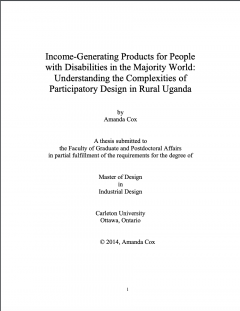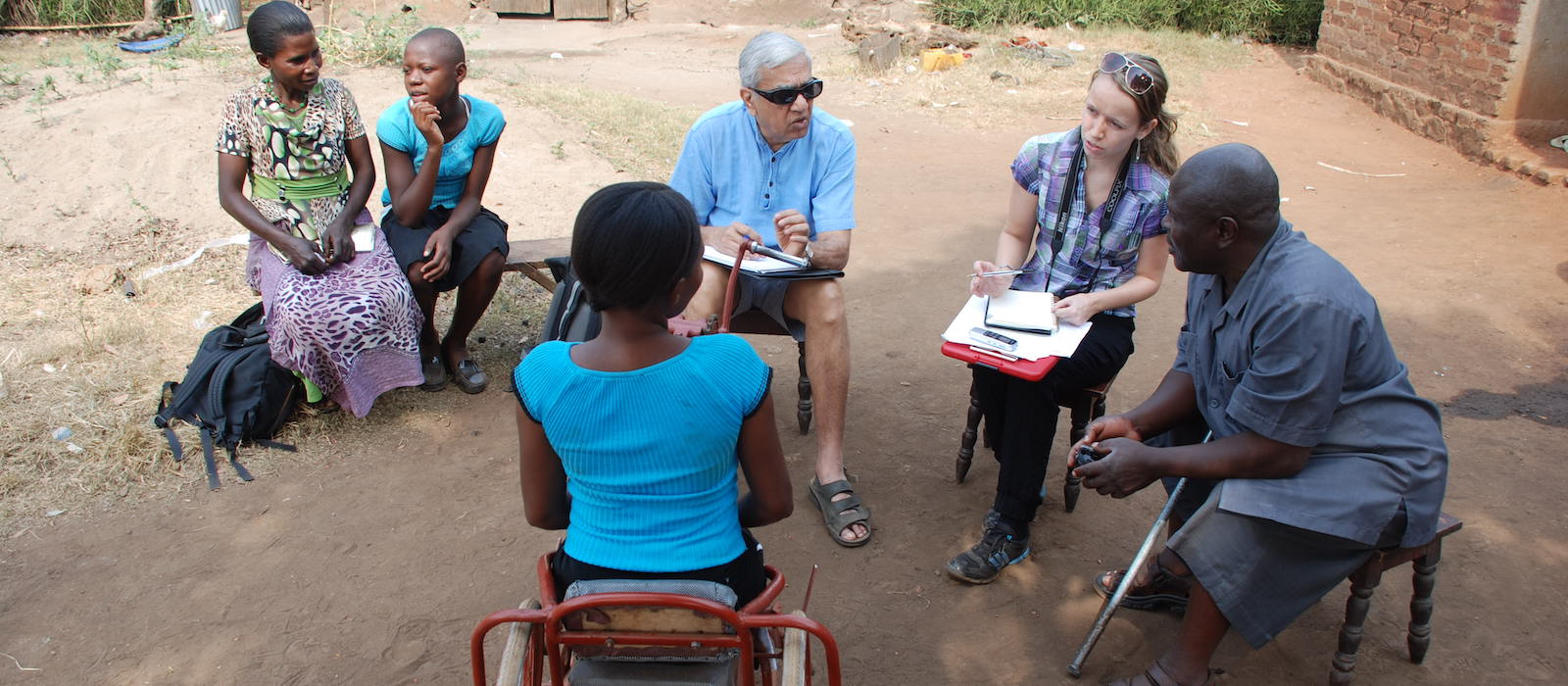Amanda Cox worked on the Design Innovation in Kasese project for her Master’s thesis. Having two years to spend on the project meant Amanda was able to gain an in-depth understanding of the local context she was working in, and was able to gain insight into some of the broader questions that arose during this project.
Some of the research questions she examined included:
- Do the income-generating products perform in the field? Are there further design modifications required?
- How does CanUgan support the longer-term objective of supporting someone with income-generating mobility aids as they work to pull themselves out of poverty?
- How, if at all, are the income devices helping the recipients in their income generation?
Income-Generating Products for People with Disabilities in the Majority World: Understanding the Complexities of Participatory Design in Rural Uganda
Abstract:
This thesis is based on examining income-generating devices for people with disabilities in Uganda. The project involved having solar-charging kiosks manufactured in the Kasese region. These devices were given to people with disabilities in the area by a local organization  so that they could start a business charging mobile phones and generate an income for their family. The researcher looked for insights in multiple areas, such as if they could generate an adequate income, whether it created independence or dependency, if the design of the device was appropriate for the context, and gaining a better understanding of the complexities of this type of project. The research was conducted using questionnaires filled out by volunteers of the local organization, as well as observations and in-person interviews during two weeks of field-work in Uganda. The findings show that these types of projects are complex, and that more case studies would help to shed light on this emerging design field. The researcher also discovered many insights related to the device itself, including: people would bring it inside at night to light their homes; people had differing abilities to generate income; and recipients needed multiple revenue sources to earn a living.
so that they could start a business charging mobile phones and generate an income for their family. The researcher looked for insights in multiple areas, such as if they could generate an adequate income, whether it created independence or dependency, if the design of the device was appropriate for the context, and gaining a better understanding of the complexities of this type of project. The research was conducted using questionnaires filled out by volunteers of the local organization, as well as observations and in-person interviews during two weeks of field-work in Uganda. The findings show that these types of projects are complex, and that more case studies would help to shed light on this emerging design field. The researcher also discovered many insights related to the device itself, including: people would bring it inside at night to light their homes; people had differing abilities to generate income; and recipients needed multiple revenue sources to earn a living.
